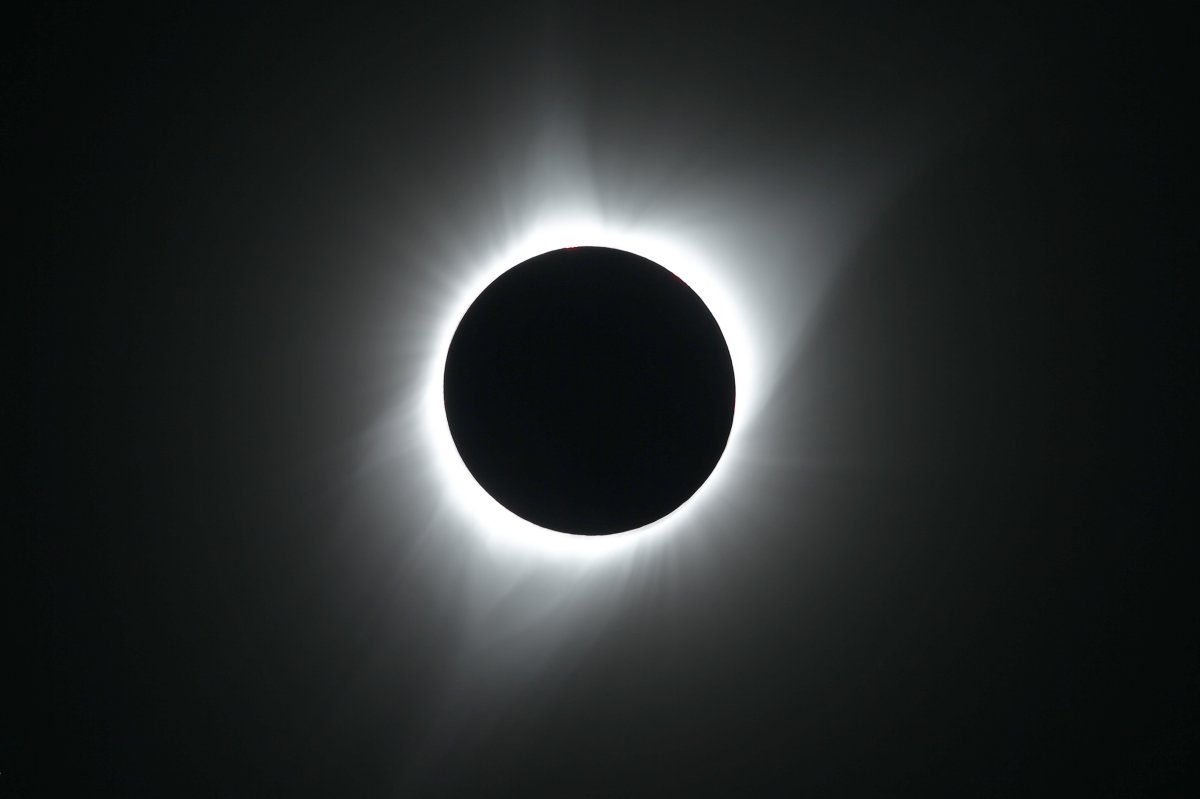Thousands of people are expected to flock to Texas next month to view the solar eclipse, and some officials are concerned about the massive strain the crowds will put on local resources.
On April 8, the moon will be positioned so that the entire disc of the sun will be blocked out in several U.S. states, plunging millions of people into darkness during the early afternoon. The path of totality will start in Mexico and extend across Texas, Oklahoma, Arkansas, Missouri, Illinois, Indiana, Ohio, New York, Pennsylvania, Vermont, New Hampshire, and Maine before heading out over the North Atlantic.
The spectacle is expected to draw crowds from around the nation as people head to areas in the path of totality to witness the eclipse. Texas officials have voiced concerns about stretched public safety resources, "enormous strain" on local hospitals and congested roadways. The concerns have prompted several judges to issue disaster declarations in advance of the astronomical event. Multiple school districts also plan to close, citing student safety.
Travis County, Kendall County, Hill County, Kerr County and Bell County are among those who have issued disaster declarations in advance of the eclipse.
The former's declaration said: "Effective Friday, March 8, 2024, Travis County Judge Andy Brown issued a Declaration of Local Disaster in anticipation of extremely large crowds, increased traffic, and enormous strains on first responders, hospitals, and roads on the days leading up to, on, and after the day of the upcoming total solar eclipse."

The declaration added, "The large crowd may create a public safety hazard and impede or delay first responders answering calls for service."
In Hill County, officials have urged residents to conduct errands such as refilling prescriptions days before the eclipse. In Kerr County, officials are expecting their population of 53,000 people to triple as visitors flock to the area to view the astronomical phenomenon.
Kerr County Judge Rob Kelly issued a disaster declaration on March 4.
"We expect that kind of visiting traffic here to cause extreme traffic congestion on our roadways, place an enormous strain on our first responders and hospital systems, drain our food and fuel supplies and strain our city and county infrastructure to, quite possibly, over capacity," Kelly said according to a webpage about the declaration.
Issuing a disaster declaration allows counties to request state assistance and resources from the Texas Department of Emergency Management (TDEM) should they be needed.
Newsweek reached out to TDEM by email for comment.
Although only a handful of states will be in the path of totality, every state in the contiguous U.S. will be able to see some form of eclipse, with only small parts of Hawaii and Alaska missing out.
The last total solar eclipse in the U.S. was on August 21, 2017. The next one will not occur in North America until 2044.
Uncommon Knowledge
Newsweek is committed to challenging conventional wisdom and finding connections in the search for common ground.
Newsweek is committed to challenging conventional wisdom and finding connections in the search for common ground.
About the writer
Anna Skinner is a Newsweek senior reporter based in Indianapolis. Her focus is reporting on the climate, environment and weather ... Read more
To read how Newsweek uses AI as a newsroom tool, Click here.








